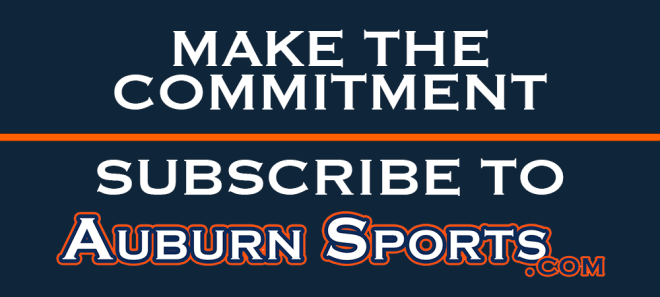Jarrett Stidham's first season at Auburn was a success in many ways, but a difficult early stage coupled with some costly fumbles late in the season took some sheen off the overall body of work.
Still, he's an excellent quarterback. And he may become elite this season.
Stidham picked Auburn because of Malzahn's system, which resembled Baylor's in the way it uses quarterbacks, and because former Baylor coach Art Briles wholeheartedly recommended the Tigers' program. The transfer quarterback's first few games in the orange and blue didn't unfold as expected. Rustiness in terms of trusting reads played a surprisingly big role along with strategic adjustments made between Malzahn and new offensive coordinator Chip Lindsey. There were a lot of new pieces introduced to Auburn's offense last season and, well, the machine didn't operate cleanly until Week Three against Mercer.
Lindsey's biggest adjustment was creating more opportunities in the short passing game rather than asking Stidham (and his receivers) to execute deep throws several times per quarter. Stidham is excellent with the deep ball, sure. Darius Slayton is excellent at catching deep balls, sure. That equation worked like gangbusters during fall camp, which led Lindsey and Malzahn to consider that an ideal complement to Kerryon Johnson's work on the ground. The problem is that Auburn's offensive front couldn't give Stidham enough time to consider multiple targets beyond 15 yards in real games. Those defenses teed off on the young quarterback — effectively undermining Auburn's passing attack and damaging Stidham's confidence in the process.
Once the adjustment was made, however, Stidham's completion percentage soon cracked the 70-percent barrier and the situation changed dramatically. With Ryan Davis, Eli Stove and Will Hastings catching everything inside of 10 yards and Slayton routinely winning balls in phase beyond 20 yards, Stidham quickly became one of the nation's most effective quarterbacks.
He was sensational during a critical stretch against Texas A&M and Georgia: 36-of-50 for 482 yards, six touchdowns and zero interceptions. He was good enough in the Iron Bowl (21-of-28, no touchdowns or interceptions), but was just so-so in the SEC Championship game and fell flat with two picks and a fumble during the Peach Bowl loss to Central Florida.
It happens sometimes.
Stidham missed some work during the winter after undergoing surgery on his left shoulder, but regained full health in late March. He's been busy this summer working the Manning camp, two California camps and attending smaller get-togethers with quarterbacks and quarterback gurus. Recall that Malzahn prohibited his quarterbacks from working with outside instructors prior to Stidham's arrival. It's an interesting (and abrupt) change of heart on this issue, which perhaps shows that Malzahn can adjust to changing conditions.
Stidham is considered one of the top quarterback prospects heading into the 2019 draft. Though he's not particularly tall in an NFL context at 6-foot-2, his arm is considered plenty strong and he's shown the ability to complete different kinds of throws. He's elite in terms of launching deep balls — both in terms of identifying open receivers and choosing a flight path that plays to the receivers' advantage. Auburn's offense didn't accentuate intermediate throwing at all last season, which is something the NFL values. Malzahn never has valued it because he generally views the passing game as a way to alter defensive positioning. He wants safeties and linebackers drifting backward out of concern for deep balls.
Will Stidham be allowed to throw intermediate balls this season? Will Auburn begin featuring those kinds of passes this season? Those are good questions that don't yet have answers. Stidham certainly has the physical ability to complete throws into those windows, but modern college defenses love using robber concepts to troll for interceptions in the 10- to 20-yard depths. Stidham must be careful.
Malzahn also has said this summer that Stidham must continue to be at least a token running threat, which isn't as crazy as it sounds. He's a good athlete. His speed and acceleration is good enough to yield some useful runs via scramble or option reads where the defense loads up on the tailback. Stidham must work to maintain possession in those scenarios and must pay closer attention to avoiding big hits in the open field. He can be unnecessarily valorous when tasked with running the football. It's an admirable quality from a leadership standpoint, but Auburn cannot reach its full potential with Stidham injured.
Any Stidham assessment also must include mention of his personality. He handles himself like a professional; he knows how to answer questions with grace (even bad questions) and approaches the game with an even-keeled yet fully engaged attitude. He's often spotted during pre-game pumping up defensive teammates and cheers along the sideline with reckless abandon during many defensive series. He knows how to lead. He knows how to curry favor. He knows how to be an ambassador for Auburn, for his team. From an intangibles perspective, honestly, Stidham is flawless.
Stidham isn't the same player Cam Newton was and is, but he can have the same effect Newton had in 2010. He can be Mr. Everything. If Auburn is to qualify for its first playoff this fall, that's exactly what Stidham must become. It's a lot of pressure to be sure, but I can think of no Auburn player during the past 20 years better suited to handle the spectacle.
ON THE UP SIDE: Accuracy, pocket elusiveness, arm strength, emotional stability
ON THE DOWN SIDE: Ball security
VOTING RESULTS: Unanimous No. 1
PREVIOUS RANKINGS: No. 1 in 2017

THE AUBURNSPORTS.COM TOP 20 FOR 2018:
